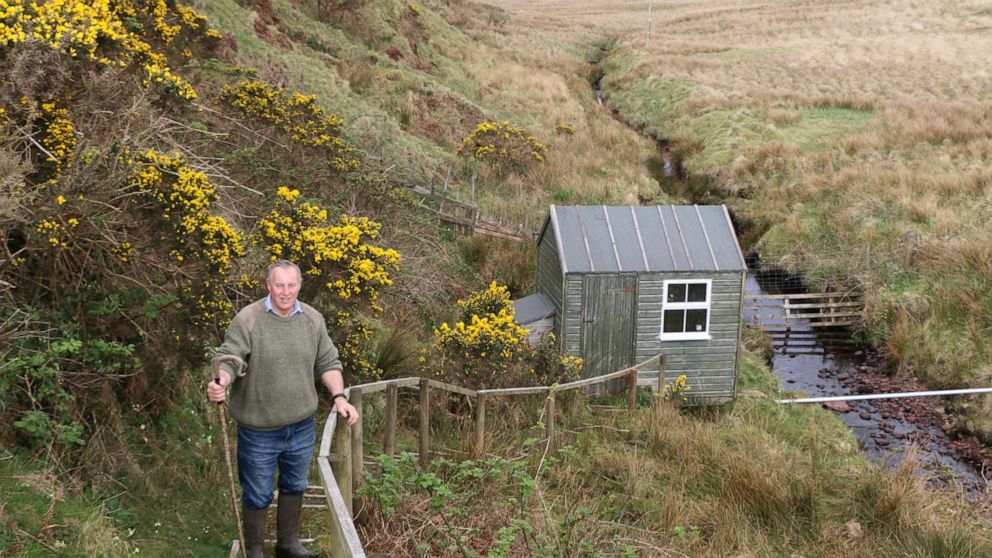


Forget vineyards and wine tastings -- the hot new travel trend is whisky walks in the country where scotch originated: Scotland.
As long as there have been people in Scotland, there has been Scotch whisky, but it wasn't big business until the 19th century when it became legal -- and profitable. Today, there are over 120 distilleries across five regions (Campbeltown, Highland, Islay, Lowland and Speyside) -- and business is booming as a whisky renaissance takes hold of America.
In recent years, whisky-specific bars have opened their doors in cities like New York, Chicago and Los Angeles to millennials who crowd in every night for a taste of the good stuff.
Once thought of as a drink for old men, in the last few years scotch has shed its stuffy reputation and become what no one 20 years ago thought it would be: trendy and hip.
(More: Amazing travel jobs: Bourbon steward-in-residence at Kentucky hotel)And the revival of the drink has led to travel demand to see how it's made.
In May, I, a self-confessed whisky Luddite, decided to check out the whisky phenomenon for myself and headed straight to the small, windswept island of Islay in the southern Hebrides, just off the west coast of Scotland and 25 miles north of Ireland.
Islay is not only a wildly beautiful island, it is also home to nine of the Scotland's most famous distilleries, which the make all of the country's famed (and expensive) peated single-malt whisky.
My first stop was the modern home of craft whisky, the Bruichladdich distillery located on the west side of the island on the shores of Loch Indaal.
Bruichladdich has technically been around since 1881, but by the time it was bought in 2001 by wine distributors Mark Reynier and Simon Coughlin along with a consortium of investors, it had been shut down for over six years. Reynier and Coughlin committed to hand-crafted production with a twist, using an innovative range of barrels -- especially wine casks from hard to source vineyards -- to age their whisky as opposed to the ex-bourbon and sherry casks more typically used in scotch.
Bruichladdich was such a success in 2012 it was sold to Remy Cointreau for approximately $74 million with the stipulation that the craft distilling would continue. Today, Bruichladdich is the second largest employer on the island, behind the local government.
(More: Disney Cruise Line's roaming gin trolley is nightcap goals)Upon arrival at the distillery, I was greeted by the current master distiller, Adam Hannatt, and got straight to sipping.
While whisky tasting is similar to wine tasting, there's one major difference: Wine, you spit; whisky you swallow.
But it's not like you end up sideways. Single malt whisky is not supposed to be slammed or drunk in a hurry. The small samples are meant to be savored as the flavors come alive on your tongue, burning a smooth path down your throat.
"A great whisky will open slowly and taste different on your palate from one second to the next," Hannatt said. Each whisky and each cask will have a distinct, singular flavor.
"Islay has several micro eco-systems," Hannatt said. "And because we do everything by hand -- and not with preset ingredients and instructions -- and because our ingredients are mostly from Islay, every batch will be different. There's a connection there that feels right, that we took barley from that farm, we distilled it here, we aged it here, we bottled it here, and released it to the world."
I tried the company's eponymous unpeated whisky Bruichladdich, the heavily peated Port Charlotte -- both of which are fruitier, almost peachy, despite a peach never having grown on the island -- and Octomore, which they boast is the most heavily peated whisky in the world. It has a calmer taste than I'd expected; the peat still smokes in the mouth but doesn't punch you in the throat.
The next few days were spent driving between the other eight distilleries on the islands, sampling whiskies, roaming the pristine beaches, and trying the famed whisky linking the three most famous distilleries: Ardbeg, Lagavulin, and Laphroaig (Prince Charles' personal favorite).
Along the way, I ran into a bunch of Americans, including a pair of 32-year-old honeymooners, a couple of tech guys and a gaggle of millennial women on a girls' trip.
And if the line of tourists I saw lining up for the ferry on the way back are any indication, there are many more to come.
There are several bed and breakfasts and hotels including two five-star joints.
The Islay House: A fully refurbished 18th century estate set in fields of bluebells with views of Loch Indaal.
The Machrie: Set in the dunes of Laggan Bay, this five star hotel boasts a DJ Russell designed golf course and full spa.
Do not drive. Many Americans will be tempted to rent a car and drive from Glasgow. While the drive is indeed beautiful, it is long and windy -- and even more important, once you get to Islay, the roads are very thin and difficult to maneuver at times. Not to mention, if you are whisky tasting, you should not drive, period.
Instead, fly into Islay from Glasgow (or take a bus and a ferry) and hire a taxi. Many of the local drivers are available for the entire day and bonus: they all have lived on the island their entire lives and are full of good stories, local lore and happy to drive you from distillery to distillery making scenic pitstops along the way so you can snap the best Instagrams ever.